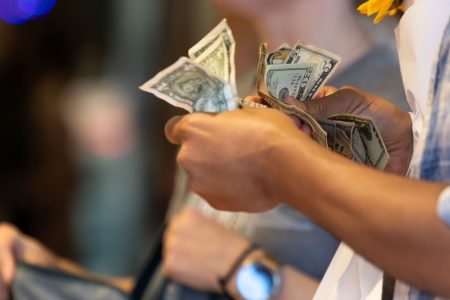SeongJoon Cho/Bloomberg via Getty Images
The U.S. Federal Reserve may start cutting interest rates before year’s end. That could make future trips abroad more expensive for the nation’s travelers.
That’s due to how interest-rate policy affects the strength of the U.S. dollar.
Here’s the basic idea: An environment of rising U.S. interest rates relative to those in other nations is generally “dollar positive,” said Jonathan Petersen, senior markets economist and foreign exchange specialist at Capital Economics.
In other words, rising rates underpin a stronger U.S. dollar versus foreign currencies. Americans can buy more stuff with their money overseas.
The opposite dynamic — falling interest rates — tends to be “dollar negative,” Petersen said. A weaker dollar means Americans can buy less abroad.

Fed officials in June signaled they expect to cut rates once in 2024 and four additional times in 2025.
“Our expectation for now is the dollar will come under more pressure next year,” Petersen said.
However, that’s not necessarily a foregone conclusion. Some financial experts think the dollar’s strength may have staying power.
“There have been quite a few headlines calling for the U.S. dollar’s demise,” Richard Madigan, chief investment officer at J.P. Morgan Private Bank, wrote in a recent note. “I continue to believe the dollar remains the one-eyed man in the land of the blind.”
Why the U.S. dollar gives a ‘discount’ overseas
The Fed started raising interest rates aggressively in March 2022 to tame high pandemic-era inflation. By July 2023, the central bank had raised rates to their highest level in 23 years.
The dollar’s strength surged against that backdrop.
The Nominal Broad U.S. Dollar Index is higher than at any pre-pandemic point dating to at least 2006, when the central bank started tracking such data. The index gauges the dollar’s appreciation relative to currencies of the nation’s main trading partners such as the euro, the Canadian dollar and the Japanese yen.
More from Personal Finance:
What Taylor Swift’s The Eras Tour says about ‘passion tourism’
Is inflation Biden’s or Trump’s fault? The answer isn’t so simple
Why more Americans are struggling even as inflation cools
For example, in July 2022, the U.S. dollar reached parity with the euro for the first time in 20 years, meaning they had a 1:1 exchange rate. (The euro has since rebounded a bit.)
In early July, the U.S. dollar hit its strongest level against the yen in 38 years.
A strong U.S. dollar gives “a discount on everything you’re purchasing while you’re abroad,” Petersen said.
“In a sense, it’s never been cheaper to go to Japan,” he added.
A record number of Americans visited Japan in April, according to the Asian nation’s tourism board. Benjamin Atwater, a communications specialist at InsideAsia Tours, a travel agency, attributes that partly to the financial incentive bestowed by a strong dollar.
In fact, he personally recently extended a work trip to Japan by a week and a half — instead of…
Read More: Why the Fed cutting interest rates may weaken the U.S. dollar

